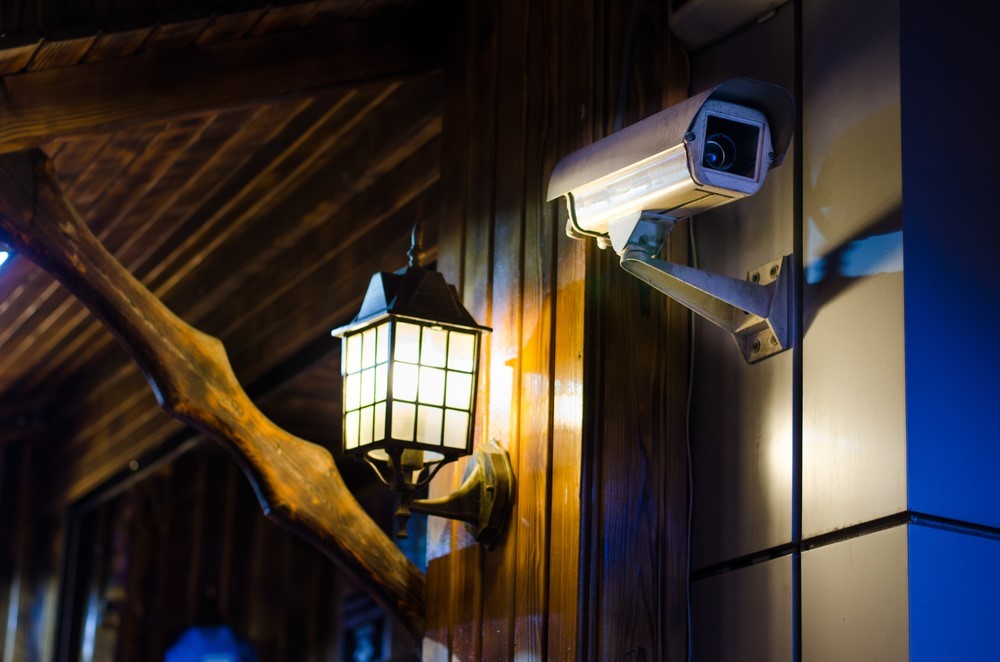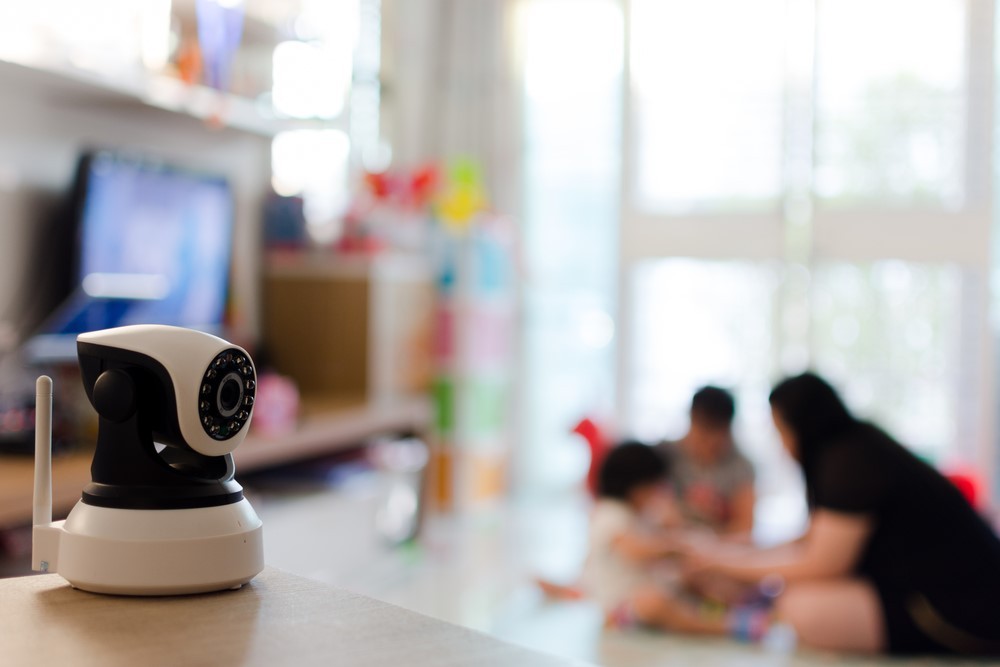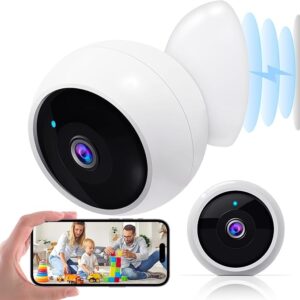Ideally, security cameras should be affordable, easy to install, and able to capture quality footage without depleting your bandwidth. Many different types of cameras are available on the market, and each will benefit different households. When considering which type of camera is best for home security, you must first assess your needs.
Features will vary according to the home security camera you buy. A very basic camera will capture footage with hopefully a clear picture. They will store it on a microSD card, hard drive, NVR, DVR, or cloud storage. Basic cameras allow you to check in on family members and loosely monitor the house. More robust solutions will enable you to view the entire home inside and out.
What you select as a homeowner will depend on several factors. These include:
- Your Purpose for Buying the System. Some people want to be able to monitor family members, pets, babysitters, and deliveries. Other people may want a system that will monitor their entire house in the event of an intrusion. These factors will decide what type of system you end up purchasing.
- Required Features. For outdoor cameras, you may want something that incorporates night vision or activates only when something trips the motion sensor. You may want a basic system that allows you to communicate with those inside the house. You will need to consider what you need when determining your camera system.
- Your Location. Since many wireless security camera systems operate on Wi-Fi, if internet connectivity in your area is sketchy, you may have problems recording footage. Furthermore, you need to consider the number of cameras in your house and how frequently they record footage. This will influence bandwidth.
- The Type of System That Will Work Best for Your Home. Each system is very different and has different costs. Wired security camera systems will need to be professionally installed, meaning there will be an extra cost. Wireless security camera systems are great because you can install them anywhere. However, since they use internet connectivity, they can more easily be hacked.
There are other bells and whistles associated with buying a home security system. Some of these are a must for a home, while others may be more of a want.
What to Consider in a Home Security System

In addition to the points mentioned above, you should make a list of what you need in a camera system. Each household will require something different in terms of home security. There are many “musts” when selecting a system, and then there are things that make life more convenient.
Battery Backup
Power outages are bound to happen. Also, clever thieves have been known to cut the power before breaking into a home. Without electricity, even the best home security camera goes dark and will not be able to record footage in the event of a crime. You will then lose any evidence that might have been recorded.
Therefore, some cameras come equipped with the ability to operate for a short duration using battery power. It is a worthwhile feature to invest in. Furthermore, you can also buy cameras that solely operate on battery power or rechargeable batteries.
Best Solar Powered Security Camera – Perfect For All Weather
Alerts
The best home security system can be equipped with push notifications. These will go directly to your smartphone, alerting you to any potential danger surrounding your home. It is unrealistic to watch your home all day for danger. This feature makes things more straightforward to keep tabs on activity in real time.
Depending on the camera you select, it may alert you when there is sound, motion, or an unrecognized face, or it may alert you on all these features. You can send the alerts to several people; other systems may also send emails as a failsafe option.
Cloud Storage
Some companies offer cloud storage plans with their systems. The footage is sent to a remote server and then stored for anywhere from one day to one week. The footage is deleted to make room for new video when it is full.
While some storage may be free, cloud plans usually require a monthly subscription. They may be worth the investment, especially if you are away from home for extended periods and may not be alerted to a break-in right away.
Facial Recognition
Some newer cameras use facial recognition technology. The downside of this technology is that it isn’t yet fully developed. Those who have used it state that it is better at distinguishing a face from an outdoor item than noting differences between people. This type of camera learns faces from repeated exposure, so you may need to spend a lot of time around your camera.
Monitoring Environment
The monitoring environment sets apart a full-fledged home monitor from a simple security camera. It will track house vitals, and each model will track something different. Some may track illumination, while others track motion.
- Air Quality. This feature tracks indoor pollutants, from carbon monoxide traces to cooking smells. Most monitors don’t identify the type of pollutant in the air with alerts; they will simply note the air is abnormal. This should not be considered a substitute for an actual life-saving device.
- Temperature. This feature tracks dips and spikes in indoor temperatures. It will alert you when the temperature goes outside of an established range.
- Humidity. This feature tracks humidity in the house. Outside the acceptable range, humidity can contribute to sinus irritations, static electricity, and mold
Local Storage
Some cameras have memory slots with or without cloud storage. Video can be directly stored on your device, eliminating the need for storage fees. The only downside is that if the physical storage is stolen, you don’t have anything left to go on.
Integrated Spotlights
Adequate ambient light is necessary to have your camera system work properly, enabling it to capture a clear image. While this is easy when it is daylight, nighttime becomes more challenging. This may require you to consider adding ambient light by installing lights indoors or flood lights outside.
However, some security cameras have spotlights that directly illuminate the area, providing the clearest picture possible. Integrated spotlights can be activated using motion detection. They will only be triggered when a potential intruder is within view. This eliminates the need to keep lights on all the time. Also, the glare of light tends to deter crime as well.
Motion Detection
This feature is excellent to have if you are monitoring an empty home. A built-in sensor detects movement within the range of the system. Then, the video recording feature is triggered, enabling you to save on bandwidth and only record when an intruder is detected.
These sensors are sensitive to any type of movement, which may include blowing leaves or light shifts. Select a system that will allow you to narrow the detection range or adjust the sensitivity. Otherwise, you may have several false alarms.
SmartPhone Apps
Some systems allow you to view footage on your smartphone app, which enables you to see live feeds and will allow you to customize performance. You can adjust motion/sound detection, customize notifications, and set a detection area.
Night Vision
Intrusions tend to happen during the night. Therefore, night vision is just as crucial as motion detection for a home. Most cameras will support infrared LED illumination compared to actual night vision or thermal vision.
Most cameras will automatically switch to night vision when there are low-light conditions. Others may permit you to customize them and determine activation. Cameras tend to come equipped with full-color footage, enabling you to capture important details.
Resolution
Footage will not help you catch an intruder if it lacks clarity. Search for cameras with the highest resolution (generally 1080p or Full HD). Some have a higher resolution, labeled as 2K or 4K. However, with higher resolution, be prepared to sacrifice bandwidth for clarity.
Security
There is a great deal of information regarding those who have hacked into security systems, baby monitors, and Wi-Fi to spy on others. Always check to see what the company has incorporated to address this issue. Find a camera that contains the latest wireless security protocol. Ensure it encrypts internet transmissions like live feeds, passwords, and usernames.
Scheduling
Scheduling will allow you to turn cameras on or off, send specific alerts, and detect any motion. It comes in handy when you want to know when children come home from school or want to monitor your residence while away. It reduces false alerts as well.
Cameras with a geofencing capability do this based on a smartphone’s location. They activate while you leave home and turn off when you return.
Two-way Communication
Hearing what is happening inside the home can be as crucial as video footage. It may alert the person to an event occurring out of the camera’s range and allows you to speak through the camera. This allows you to communicate with children, pets, or intruders.
Wireless Camera Range
There is a benefit to moving a wireless camera anywhere in the house. You should maintain connectivity no matter how far from the router. Some come with ethernet ports, so you can additionally hardwire them into the network.
Web Client
There are cameras that you can access through web portals, which is excellent for times when you don’t have access to your phone or a connection. This app mimics the mobile phone closely, so it will not take you long to learn how to use it.
Which Type of Camera Is Best for Home Security?

When it comes to protecting your home, choosing the right security camera is crucial. With a wide range of options available, understanding the different types and their features will help you make an informed decision. Below, we explore the best types of cameras for home security and what makes them stand out.
Wired Security Cameras
Best for: Long-term security and stable connection
Wired security cameras are directly connected to a power source and a recording device, such as a DVR or NVR. These cameras offer a stable connection without the risk of Wi-Fi interference.
Pros:
- Reliable and consistent performance
- Higher video quality compared to some wireless options
- No concerns about battery life
Cons:
- Complex installation process
- Limited placement flexibility due to wiring requirements
Best Indoor Wired Security Camera
Blink Mini – Compact indoor plug-in smart security camera
Ring Stick Up Cam Plug-In
Wireless Security Cameras
Best for: Easy installation and flexible placement
Wireless security cameras connect to a Wi-Fi network and transmit footage to a cloud-based or local storage system. These are ideal for renters or homeowners looking for a hassle-free installation.
Pros:
- Simple setup with minimal wiring
- Can be placed anywhere within Wi-Fi range
- Smart features like motion detection and remote access
Cons:
- Dependent on Wi-Fi signal strength
- May require regular battery charging (if battery-powered)
Best Indoor Wireless Security Camera
Kasa Smart Indoor Pan-Tilt Home Security Camera
Best Outdoor Wireless Security Camera
Ring Outdoor Cam (Stick Up Cam) Wireless Outdoor Camera
Battery-Powered Cameras
Best for: Outdoor surveillance and areas without power outlets
These cameras operate on rechargeable or replaceable batteries, making them suitable for areas where running wires is impractical.
Pros:
- No need for wiring or power outlets
- Portable and easy to relocate
- Often include motion-activated recording to save battery
Cons:
- Requires battery maintenance
- May have a slight delay in activation
Best Indoor/Outdoor Battery-Powered Security Camera
AMTIFO Security Cameras
Indoor Security Cameras
Best for: Monitoring indoor activity and home security
Indoor cameras are designed for home monitoring, pet surveillance, and baby monitoring. They often include two-way audio, night vision, and motion detection.
Pros:
- Affordable and easy to install
- Can integrate with smart home systems
- Often include two-way audio for communication
Cons:
- Limited to indoor use
- May require cloud storage subscriptions for advanced features
Outdoor Security Cameras
Best for: Monitoring driveways, entrances, and backyards
These cameras are weather-resistant and designed to withstand various outdoor conditions. Many come with night vision, motion detection, and AI-powered threat detection.
Pros:
- Durable and weatherproof design
- Equipped with night vision and motion detection
- Acts as a deterrent to potential intruders
Cons:
- May require professional installation
- Needs regular maintenance to ensure clear footage
Doorbell Cameras
Best for: Entryway surveillance and package monitoring
Doorbell cameras provide live video feeds of who is at your door and often feature two-way communication. They are ideal for preventing porch theft and monitoring visitors.
Pros:
- Easy installation and user-friendly
- Real-time alerts when someone approaches your door
- Two-way audio for communication
Cons:
- Requires a strong Wi-Fi connection
- Some models require a subscription for cloud storage
Best Doorbell Security Camera
Ring Battery Doorbell
PTZ (Pan-Tilt-Zoom) Cameras
Best for: Large area coverage with remote control
PTZ cameras allow users to pan, tilt, and zoom remotely, making them ideal for monitoring large properties.
Pros:
- Wide field of view with adjustable angles
- Zoom capabilities for detailed viewing
- Smart tracking features available in some models
Cons:
- More expensive than fixed cameras
- Requires manual or automatic control for best coverage
Best PTZ (Pan-Tilt-Zoom) Security Camera
WYZE Cam Pan v3
Choosing the Right Security Camera for Your Needs
Conclusion
Which type of camera is best for home security? The answer will be based on your needs, your location, and your personal reasons for investing in the system. There are many things to consider when purchasing a home security system. Select the best home security camera that will keep your entire house safe.
Most Popular Posts:







